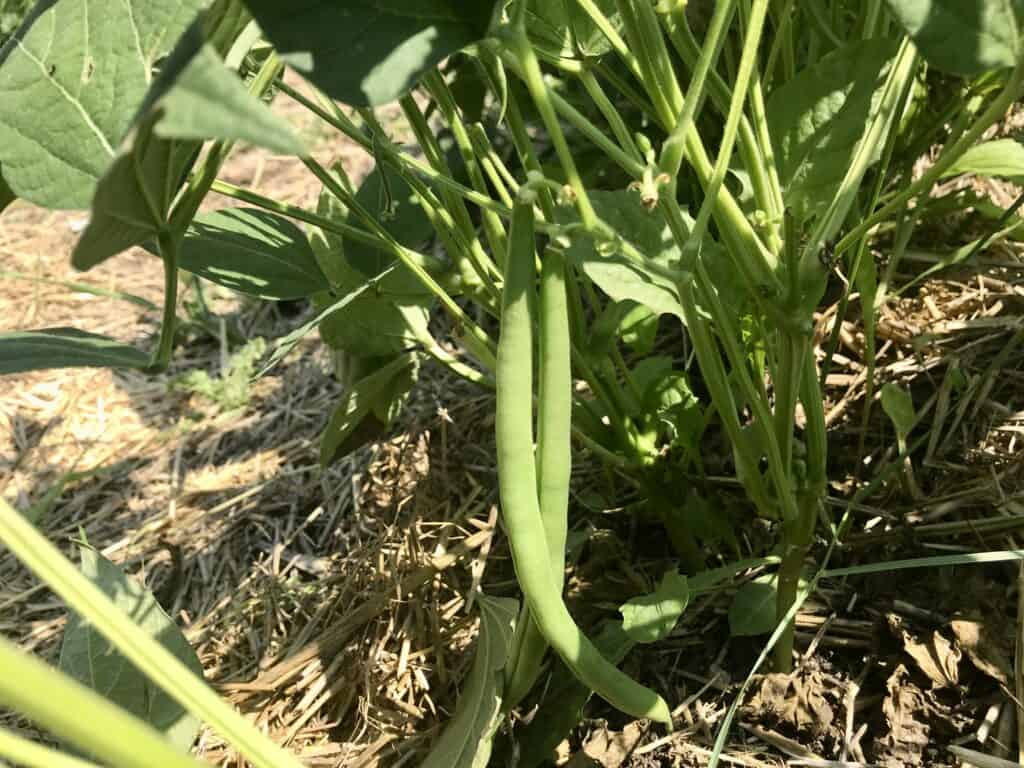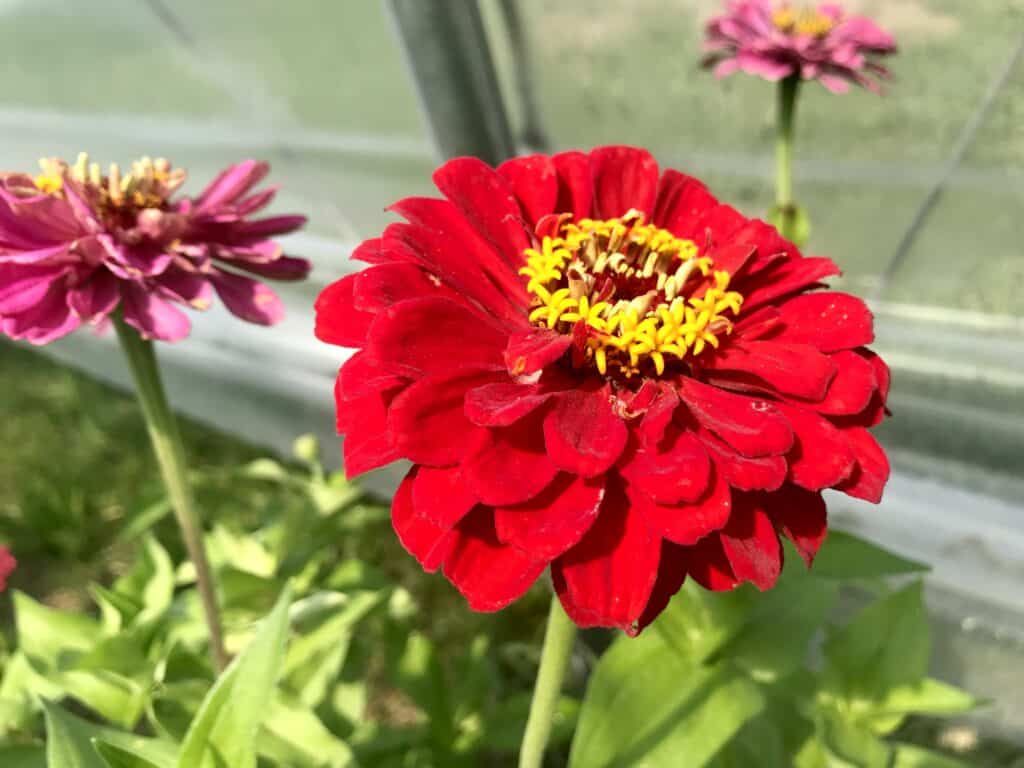
Zinnias, although not a native flower, are a huge favorite of mine. They have such beautiful, bold colors. I included them here in my hoop house as well as my vegetable garden, not only for their beauty but also for the pollinators and for cut flowers. This specific selection has some gorgeous, huge blooms. Read on to the end of the post to find out exactly which seeds they are!

For the first time this year, I tried my hand at growing pickling cucumbers. Somehow I missed seeding them earlier in my house, so I just seeded directly into the hoop house and it seems to be working well!
What I didn’t count on, though, is how few cucumbers are ready at one time. So either it would work to can a small batch of pickles per week, or you’d really have to grow quite a few plants to make it worthwhile.
I ended up ordering pickling cukes from a Hutterite colony and canned those instead! And the kids have been happy to pick and eat the little guys from our hoop house.

This is an okra plant, another newbie! Since I didn’t realize the okras should be picked within 1-2 days old and 2-4 inches long, I left the first ones far too long so had to compost them because they were so tough. I’m not quite sure what I’ll do with these okra, but I’ll figure it out, ha.

Tomatoes! This variety is called “Pink Ponderosa”. They are looking great so far, and there are many tomatoes on the plants. I believe I planted them too closely together, but so far there don’t seem to be any issues. For supports, we have some 7 foot T-bars with sturdy wire strung between them.


Gorgeous nasturtiums interplanted with the tomatoes. Bees love them, plus they’re edible!

Jalapenos are looking super productive! I look forward to using them when I can homemade salsa.

This is the whole view of the hoop house. It’s pretty wild in there! I am impressed with the amount of fruit and veg production in a fairly small space, though. And as the soil health improves (this is the first year, and we just tilled under some weedy pasture type grass and planted in that soil), I believe production and plant health will only get better.

A variety of fall raspberries that apparently starts production in July. Fruit ripens bit by bit until the fall, unlike summer fruiting raspberries, which generally fruit heavily only for a few weeks in July. We do have those as well, but this year the fruit production was pretty sparse.

Dill, anyone? I let it reseed, and it’s growing happily all on it’s own!

My rhubarb plant has really taken off this year. I think I have to divide it this year…this plant is enormous! Although I’ve harvested it several times this spring and early summer, and shared with anyone who wanted some, it still has a ton of stalks.
The sunflowers you can see in the background are all volunteers, reseeded from last year.

Another abundant crop has been green beans (I love the variety “Jade”). Some of our family members, myself included, absolutely love to eat fresh steamed green beans with a healthy pat of butter…mmm.

Coneflowers next to leek in the veggie garden. The bees and butterflies adore coneflower!

All the calendula (the orange in the background of the above photo) reseeded from last year.

Pollinators also love borage! All the borage in my garden also reseeded last year and I let it grow. I’ll need to get rid of some before next year, but borage is a great plant to build healthy garden soil.
Not pictured are carrots, which are looking fantastic, and beets, which I harvested and processed a couple of weeks ago. Plus I have multiple different crops throughout- zucchini, potatoes, different herbs, lettuces, green onions, swiss chard…

Nearby, lots of flowers for the pollinators!

One last look at a stunningly brilliant zinnia, and below is the seed packet that I used.

I find it so fun to grow our own produce and teach our kids about gardening and preserving our own food. I hope you are inspired to do the same!
Happy Gardening!

